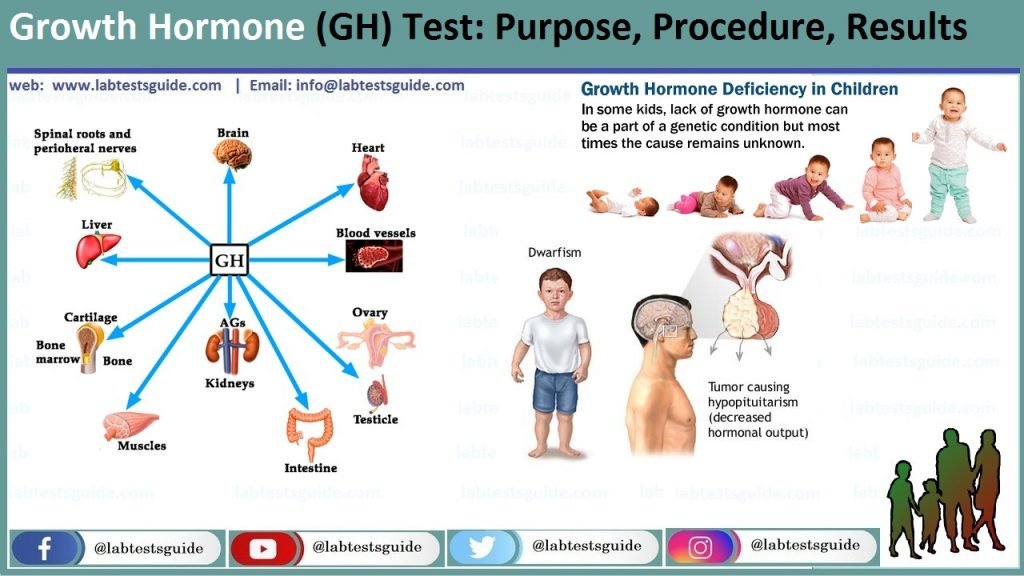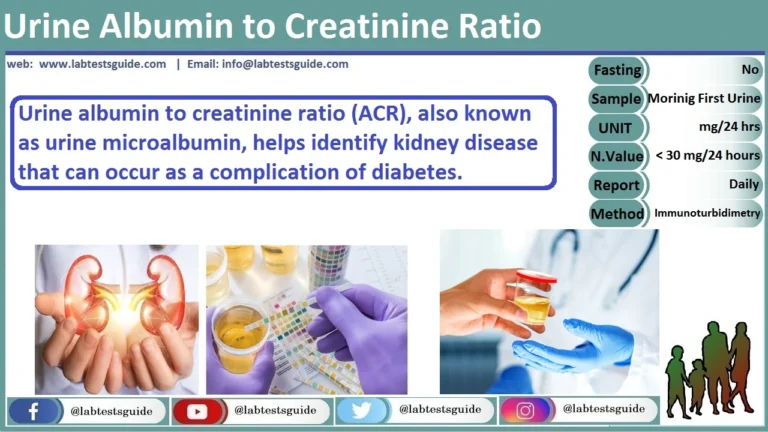The growth hormone (GH) stimulation test measures the ability of the body to produce GH.
The growth hormone stimulation test is usually performed to identify if hGH (human growth hormone) is deficient. The test is performed by administering the amino acid arginine in a vein to raise hGH levels. The test measures the ability of the pituitary to secrete growth hormone in response to the arginine. Lack of hGH can cause growth retardation in infants and children.

Also Known As: GH, Human Growth Hormone, HGH, Somatotropin, Growth Hormone Stimulation Test, Growth Hormone Suppression Test, Growth Hormone
Our bodies often change silently, almost without warning. Children grow taller. Our hair tends to thin out as we age. It’s all part of maturation and is controlled by hormones. But sometimes things go wrong.
The hormone that helps control growth and chemical reactions in our body is called human growth hormone. (You can see it spelled out as HGH, or GH for short.) Your body may or may not make it in large amounts.
Purpose Of The Test
- Growth hormone is done to identify its deficiency in:
- Adults with short stature.
- Delayed sexual maturity.
- or other growth abnormalities.
- To diagnose gigantism or acromegaly,
- This can be used to identify the pituitary hypofunction or hyperfunction.
Growth Hormone Deficiency:
A growth hormone deficiency (GHD) occurs when the pituitary gland doesn’t produce enough growth hormone. It more commonly affects children than adults.
The pituitary gland is a small gland about the size of a pea. It’s located at the base of the skull and secretes eight hormones. Some of these hormones control thyroid activity and body temperature.
Sample Required
- This test is done on serum (clotted blood 3-5ml).
- A serum sample is preferred.
- Plasma (EDTA) has lower values with some methods.
- The patient should be fasting and complete rest for at least 30 minutes before taking the blood.
- It is stable for 8 hours at 2 to 8 °C.
- It can be kept for a longer period at -20 °C.
Sampling Precautions:
- Take the test immediately because the half-life of GH is 20-25 minutes.
- Refrigerate the serum immediately.
- The patient must be fasting after midnight.
- The patient must be fasting and completely resting 30 min before the sample is taken because this can increase the level.
- Avoid stress, hypoglycemia, and exercise during specimen collection.
- EDTA plasma gives lower values.
- Random measurement is not useful due to the episodic variation in the GH level.
- Medications that can increase the level are amphetamine, estrogen, dopamine, insulin, methyldopa, levodopa, histamine, and nicotinic acid.
- There are certain medications that lower the GH level are phenothiazine and corticosteroids.
Various Type Of Tests:
- A growth stimulation test can be done to evaluate the deficiency.
- Growth suppression test is done in the gigantism and acromegaly in adults.
- Oral glucose tolerance test is very helpful where there is a rise in glucose level. Normally GH is suppressed. But in acromegalic patients, there is slight or no decrease in GH.
- Give glucose 75 to 100 grams in 5 minutes, then get the sample for GH at 30, 60, 90, and 120 minutes.
Clinical Presentation Of Deficiency Of Growth Hormone:
- This is usually seen in the hypothalamic and pituitary tumors.
- Growth is a dwarf and short stature children.
- Diagnosis:
- Advice Two stimulating tests like insulin hypoglycemia or arginine.
- Measure GH at 30, 60, 90 minutes.
- Normal patients show an increase of >8.0 ng/mL.
Normal Values:
Source 1
| Age | ng/mL |
| Cord blood | 8 to 41 |
| Newborn | |
| One day | 5 to 53 |
| One week | 5 to 27 |
| Child 1 to 12 months | 2 to 10 |
| Adult | |
| Male | 0 to 4 |
| Female | 0 to 18 |
| > 60 years | |
| Male | 1 to 9 |
| Female | 1 to 16 |
- To convert into SI units x 1.0 = µg/L
Source 2
| Men | <5 ng/mL or <5 µg/L) |
| Women | <10 ng/mL or <10µg/L) |
| Newborn | 10 to 40 ng /ml |
| Child | 0 to 10 ng/ml |
- The random level of GH provides little diagnostic information.
- The single estimation may not be helpful because of the variation in the level of GH during the day.
The Increased GH Level Is Seen In:
- Pituitary gigantism (Acromegaly = up to 400 ng/ml).
- Ectopic GH secretion e.g. Stomach neoplasm, lung.
- Renal failure.
- Cirrhosis.
- Stress, exercise, prolonged fasting.
- Uncontrolled diabetes mellitus.
- Anorexia nervosa.
- Starvation and malnutrition.
- Hypoglycemia.
- Major surgery.
- Exercise.
The Decreased GH Level Is Seen In:
- Pituitary dwarfism, hypopituitarism.
- Adrenocortical hyperfunction.
- Hyperglycemia.
- Delayed sexual maturity.
- Growth hormone deficiency.
Treatment
- For the acromegaly due to adenoma is transsphenoidal resection of the tumor.
- Another method is gamma knife multiport irradiation.
- Somatostatin (SST) long-acting needs only one dose per month.
Possible References Used




